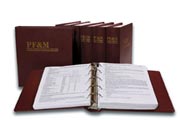 |
 |
 |
|
PF&M at a Glance Manufacturers output policies Should a policy developed to meet the unique property needs of the automobile manufacturing industry be used to cover the property exposures in a local retail shoe store? The Manufacturers Output Policy (MOP) was originally developed as an inland marine product for the automobile industry. It was designed to cover stock during production as the vehicles passed through different plants, continuing while the vehicles were in transit and even at the dealership. The MOP covered the vehicle as long as the named insured had a financial interest in the vehicle. This policy was very focused and provided coverage wherever the stock was. The coverage was not limited to a single location, instead it moved in the same way the stock moved. A new flexible, sleek and streamlined inland marine policy replaced the boxy, awkward and rigid commercial property policy. The MOP has evolved from a focused stock-only inland marine product for the auto industry into an extremely broad commercial property coverage form with a unique rating structure. During the transition, companies using the MOP used their own coverage forms. A standardized version did not appear until AAIS introduced and filed the Commercial Output Program (COP) in 1994. ISO developed and filed a similar product called the Capital Assets Policy (CAP) in 2002. These forms provide a number of automatic additional coverages, extensions of coverage and supplemental coverages, including a number of inland marine coverages. The limits for the coverages are substantially higher than what is provided on the standard commercial property forms. Eligibility requirements have changed to the extent that even relatively small accounts now qualify. The only eligibility limitation on the COP and the CAP is the exclusion of personal lines exposures. This means that some accounts are eligible for Businessowners (BOP), Commercial Property (CPP) and MOP approaches. What factors should be used in determining the best program for the insured? The first consideration is coverage. The coverage provided by a MOP product is considerably broader than that offered by either the CPP or the BOP, but exactly how many of the coverages offered does the insured need? The MOP’s property covered is more expansive, which means the amount of coverage carried must be higher in order to avoid coinsurance penalties (if applicable). Some of the coverages are provided at specified lower limits. Another consideration is standardization. While the COP and CAP are both available, many companies have not adopted either, and continue to use their independent version of the MOP. This places a heavier burden on the agent when moving from one MOP carrier to another. A detailed comparison of coverage is needed to switch from one MOP to another. A coverage form may be touted as a MOP, but it may really be only a beefed-up CPP. Rating should always be a major consideration. The MOP, COP and CAP rating systems are relatively similar. This rating technique is based on experience of the risk, major industry minimum rates or loss costs and deficiency points. The deficiency point system, while based on objective criteria, is extremely flexible. Under the CAP, the deficiency points can range from 0 to 41,500. The loss costs assigned based on the deficiency points are also in a range. As an example, if an underwriter assigns 6,700 deficiency points, he or she must choose a loss cost between .68 and .811. The MOP and COP follow a similar structure. The rating of a MOP product is based on the entire risk, not each separate location, which adds even more to the potential rating variances by company and by underwriter. The rating flexibility can be very helpful when writing a risk but, if the market turns hard or an underwriter changes, it may not be as helpful in renewing a risk. Carrier appetite is a final consideration. Some carriers enthusiastically write MOP products while others are fairly restrictive in their writings. When the market tightens, carriers may prefer the more location-defined CPP or BOP but when the cycle loosens, the MOP product might become more available. If a carrier becomes more restrictive in a hard market, it may be difficult to find another market interested in the account, and the rating may change considerably. Coverage, pricing and consistency of market should all be considered. Moving an account to a MOP may be easy, but moving them out due to losses, carrier change or carrier appetite could be very difficult. * |
|
|||||||||||||
| ||||||||||||||
